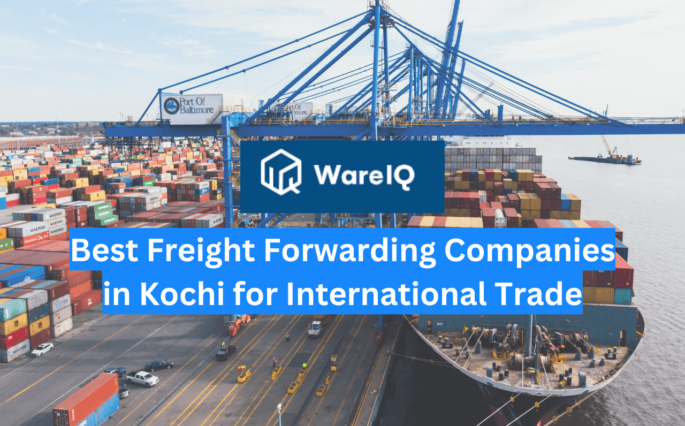Buffer Pricing and Its Importance in Logistics Efficiency


Logistics Efficiency is the name of the game. What makes or breaks a business is the ability to move goods from point A to point B quickly and cost-effectively. One such strategy that has been gaining attention is Buffer Pricing. In this Blog, we will learn more about the concept of Buffer Pricing, its benefits, and how it can help in Logistics efficiency.
- Understanding Buffer Pricing
- Challenges of Buffer Pricing
- Implementing Buffer Pricing
- Conclusion
- FAQs
- What is Buffer Pricing in logistics, and how does it work?
- Why is real-time data crucial for implementing Buffer Pricing effectively?
- How does Buffer Pricing help in adapting to changing market conditions?
- What are the key benefits of Buffer Pricing for logistics companies?
- How does Buffer Pricing tailor services to match market demand?
- What role does cost optimization play in Buffer Pricing, and how does it reduce costs for logistics companies?
- How does Buffer Pricing enhance customer satisfaction and reliability in logistics services?
- In what ways can Buffer Pricing contribute to reducing the environmental impact of logistics operations?
- What are the challenges associated with implementing Buffer Pricing in logistics?
- Can you describe the steps involved in establishing a successful Buffer Pricing strategy for a logistics company, including data collection and pricing model development?
Understanding Buffer Pricing
It is a dynamic pricing strategy that relies on the principles of supply and demand . Different price points are set for logistics services based on real-time data and market conditions. This approach allows companies to adapt to changing circumstances, optimizing costs, and ensuring timely deliveries.
The Power of Real-Time Data
In logistics, it uses real-time data to determine pricing. Factors such as fuel prices, traffic conditions, and weather are monitored by companies to make adjustments that reflect the current situation. If the level is adapted, it can help companies to avoid costly delays and inefficiencies.
Tailoring Services to Demand
One of the primary benefits of Buffer Pricing is its ability to tailor services to meet the exact demands of the market. During peak seasons, when demand is high, prices can be adjusted accordingly. Conversely, during slower periods, companies can offer discounts to incentivize business. This level of flexibility allows logistics companies to maintain a steady stream of business throughout the year.
Cost Optimization
It isn’t just about increasing prices during high-demand periods. It’s also about strategically lowering prices when conditions allow. By doing so, companies can attract more business during off-peak times, keeping their fleets and resources fully utilized. This can significantly reduce costs associated with idle assets.
Enhancing Customer Satisfaction
Efficiency and reliability are two cornerstones of logistics. With Buffer Pricing, logistics companies can provide a more reliable service. By adapting to the changing conditions, they can minimize the risk of delays and disruptions. This leads to improved customer satisfaction, as clients can count on their deliveries being made as scheduled.
Reducing Environmental Impact
Efficiency in logistics goes hand in hand with sustainability. Buffer Pricing can also contribute to reducing the environmental impact of logistics operations. By optimizing routes and schedules, companies can minimize fuel consumption and reduce emissions. This aligns with the growing trend of eco-friendly logistics and can be a selling point for environmentally conscious clients.
Challenges of Buffer Pricing
While it offers numerous advantages, it’s not without its challenges. One of the primary difficulties is the need for advanced technology and data analytics. Without accurate and up-to-date information, it’s challenging to implement this strategy effectively.
Additionally, there is the risk of alienating clients with rapidly changing prices. Striking the right balance between price adjustments and consistency is crucial.
Implementing Buffer Pricing
| Process | Description |
| Data Collection | Establish a robust data collection system that gathers information on all relevant variables, including fuel prices, traffic data, and weather conditions. |
| Data Analysis | Employ data analysts who can interpret the information and provide insights into pricing adjustments. |
| Pricing Models | Develop pricing models that consider all variables and market dynamics. Ensure that these models are flexible and can adapt to real-time changes. |
| Communication | Communicate pricing changes transparently to clients. Inform them about the reasons behind the adjustments and how they benefit them. |
| Feedback Loops | Continuously gather feedback from clients to fine-tune the pricing strategy. |
Conclusion
It is a revolutionary approach in the logistics industry, where adaptability and efficiency are essential for success. By harnessing real-time data, tailoring services to meet demand, optimizing costs, enhancing customer satisfaction, and reducing the environmental impact, Buffer Pricing has the potential to reshape the way logistics companies operate. As technology and data analytics continue to evolve, more logistics providers are likely to adopt this dynamic pricing strategy, paving the way for a more efficient and sustainable future in the logistics world.
FAQs
What is Buffer Pricing in logistics, and how does it work?
It is a dynamic pricing strategy that sets different price points for logistics services based on real-time data and market conditions, allowing companies to adapt to changing circumstances and optimize costs.
Why is real-time data crucial for implementing Buffer Pricing effectively?
Real-time data is essential for it because it helps companies make pricing adjustments based on factors like fuel prices, traffic conditions, and weather, ensuring that prices reflect the current situation.
How does Buffer Pricing help in adapting to changing market conditions?
It enables companies to adjust prices quickly in response to market changes, ensuring they can meet demand and maintain profitability.
What are the key benefits of Buffer Pricing for logistics companies?
Benefits include cost optimization, better customer satisfaction, and reduced environmental impact through efficiency.
How does Buffer Pricing tailor services to match market demand?
It adjusts prices to meet the exact demands of the market, increasing prices during high demand and offering discounts during slower periods.
What role does cost optimization play in Buffer Pricing, and how does it reduce costs for logistics companies?
Cost optimization involves strategically lowering prices during off-peak times to attract more business, reducing costs associated with idle assets.
How does Buffer Pricing enhance customer satisfaction and reliability in logistics services?
It minimizes the risk of delays and disruptions by adapting to changing conditions, leading to improved customer satisfaction.
In what ways can Buffer Pricing contribute to reducing the environmental impact of logistics operations?
Optimizing routes and schedules minimizes fuel consumption and reduces emissions, aligning with eco-friendly logistics trends.
What are the challenges associated with implementing Buffer Pricing in logistics?
Challenges include the need for advanced technology and data analytics and the risk of alienating clients with rapidly changing prices.
Can you describe the steps involved in establishing a successful Buffer Pricing strategy for a logistics company, including data collection and pricing model development?
Steps include robust data collection, employing data analysts, developing flexible pricing models, transparently communicating price changes, and continuously gathering client feedback.








